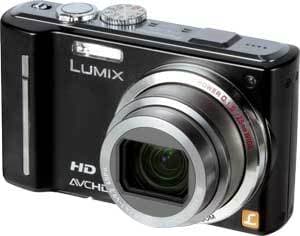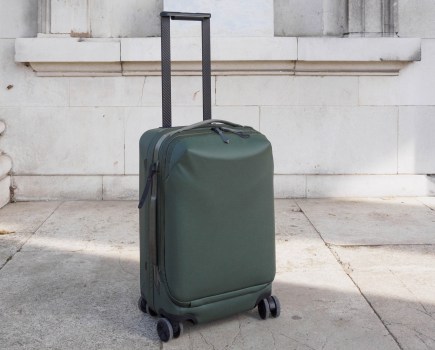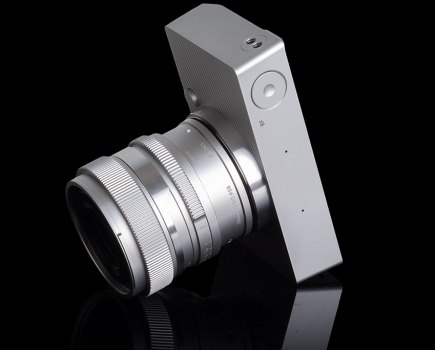Panasonic Lumix DMC-TZ10 at a glance:
- 12.1 million pixels
- 12x optical zoom (25-300mm equivalent)
- Built-in GPS
- Manual exposure controls
- Street price around £280
Not every photographer wants to lug a DSLR around with them on holiday, and often a travel compact camera is a neat compromise of size, convenience, features and image quality.
The cameras in Panasonic’s Travel Zoom, or TZ, range have been among the most popular travel compacts for photo enthusiasts for some time. This has been achieved by consistently marrying an impressive zoom lens to a compact camera body with a full complement of automatic and manual exposure controls.
Features
 The imaging sensor of the Lumix DMC-TZ10 is a 14.5-million-pixeCCD. However, images are captured at a maximum resolution of 12.1 million pixels.
The imaging sensor of the Lumix DMC-TZ10 is a 14.5-million-pixeCCD. However, images are captured at a maximum resolution of 12.1 million pixels.
The reason for the seemingly unused sensor resolution is that different parts of the sensor are employed depending upon the image aspect ratio that has been selected. This keeps the resolution of the image high, rather than merely cropping into a standard picture.
Arguably the most impressive feature of the TZ10 is its 12x optical zoom, which has the 35mm equivalent focal length of a 25-300mm optic.
The apparent power of the zoom lens can be increased to 16x using the Intelligent Zoom feature. This crops the image and then analyses different areas before interpolating it back to a full 12.1-million-pixeimage. However, the 23.4x Extra Optical Zoom feature is merely a digital zoom that produces a cropped three-million-pixel image.
The TZ10’s Travel Mode GPS function uses GPS satellites to pinpoint the camera’s exact position. This information can then be added to the image data. I was pleasantly surprised at how well it worked, with the camera correctly informing me that I was in Stockholm, Sweden, and adding precise GPS information to the image data.
However, if the camera does not detect a GPS signal it will use the last known position, so it is worth checking to see if a GPS location has been found. If not, turn the feature off altogether to avoid embedding incorrect data in the file.
The GPS data becomes useful when images are loaded into image cataloguing software. Here it can be used to sort and find images taken at particular locations, without the prior need to manually add a location tag to each file.

Image: Macro mode allows you to get very close and capture a reasonable level of detail
Build and Handling
 Clearly, a travel compact needs to be easily transportable, and the TZ10 fits comfortably, and unobtrusively, into a trouser or jacket pocket. This is an impressive feat given the focal length of the zoom, which is packed into the sturdy plastic body.
Clearly, a travel compact needs to be easily transportable, and the TZ10 fits comfortably, and unobtrusively, into a trouser or jacket pocket. This is an impressive feat given the focal length of the zoom, which is packed into the sturdy plastic body.
Despite its compact size, the TZ10 is easy to operate, with a dial enabling the camera to be switched between its various exposure modes.
Meanwhile, a complement of buttons on the rear of the camera and a directional control help to navigate the menu and adjust the shooting settings. Also on the rear of the camera is a Record button, which provides quick access to the TZ10’s video-capture mode.
I found the camera fast and easy to use. The Quick Menu button allows the most regularly used exposure settings to be accessed and changed, and the settings menus are concise and clear.
Performance
With evaluative, spot and central weighted metering available, in addition to many scene modes, all photographers should feel comfortable creating exposures with the camera. In evaluative metering mode, the TZ10 does a reasonable job of exposing images. However, it does not take highlights into consideration in many scene modes. This results in some images having a well-exposed foreground, but with blown-out background highlights or patches of sky that are solid white.
With aperture and shutter priority in addition to manual exposure options available, as well as exposure compensation, it is simple enough to adjust the camera’s metered exposure settings to your taste. I found that reducing the evaluative exposure by around -0.3EV produces images that are bright enough, but with fewer burnt-out areas, leaving more flexibility for adjustments post-capture.
Compared to a DSLR, the smaller photosites of the compact sensor restrict the dynamic range. Although I was able to recover some detail in shadow areas, once the exposure is brightened by around 1.3EV chroma noise starts to become very visible.
It is a similar story with the highlight areas, where less detail can be recovered. So for best results it is advisable to underexpose images slightly to make sure that as little as possible is burnt out.
When it comes to colour the TZ10’s AWB setting produces acceptable results, but I found that images tend to be a little cool in bright, sunny conditions. Similarly, the AWB and tungsten settings don’t completely remove the orange/yellow colour cast. Instead, these modes take the edge off, leaving a hint of tungsten lighting rather than a clinically neutral scene. If a completely neutral white balance is required, the manual WB setting is easy to use and produces accurate results.
To help the performance of the TZ10’s contrast-detection AF, there are a few extra focusing features. The first of these is a pre-focus mode that, once it detects that focus has been lost, automatically starts the camera’s AF, speeding up focusing time between shots.
Face detection and recognition are also features of the TZ10. These allow not only the prioritisation of faces for focusing and exposure, but also individual faces to be stored in the camera so they can be recognised and then prioritised.
The AF tracking mode is also useful. It allows a particular subject to be selected and tracked should it or the camera move.
On the whole, focusing is fairly fast and accurate in bright conditions, although in a poorly lit room it was a little more hit and miss. At close distances the camera’s red AF assist beam helps the camera to focus, but it is less useful beyond a couple of metres.
 Image: Exposures are generally bright, but there is a tendency for highlights to blow out
Image: Exposures are generally bright, but there is a tendency for highlights to blow out
The 3in, 460,000-dot screen of the Panasonic Lumix DMC-TZ10 is large and clear, and of a high-enough resolution to check image detail. Tucked away in the camera’s settings menu is an automatic LCD brightness option, which determines the brightness based on the strength of the ambient light. For instance, in sunny conditions it makes the screen brighter so it can be seen clearly.
The TZ10 can also capture 1280x720p HD video, which can be saved as either a Motion JPEG file or in the more advanced AVCHD Lite format.
The quality of the video footage is quite impressive. Despite quickly panning the camera, there was no sign of sensor wobble, presumably because a CCD rather than CMOS sensor is used.
Sound is recorded in stereo, with the microphones placed on the top-plate. Although the noise of the zoom is audible in footage, it is more of a quiet hum compared to cameras that suffer similar problems.
Resolution, Noise and Sensitivity

These images show 72ppi sections of images of a resolution chart, captured with the lens set to its 100mm point. We show the section of the resolution chart where the camera starts to fail to reproduce the lines separately. The higher the number visible in these images, the better the camera’s detail resolution is at the specified sensitivity setting.
In its default noise reduction settings, the Lumix DMC-TZ10 reached around 24 on our chart at a sensitivity of ISO 80. The resolution drops as the sensitivity increases, but even with the effects of image noise and noise reduction it is still capable of reaching 18 at ISO 1600.
At ISO 80 luminance noise is present, though unobtrusive, and it only really becomes an issue at sensitivities over ISO 400. Beyond this point, noise reduction causes images to have a flecked appearance. However, the image quality is very good for holidays and social occasions – particularly if the sensitivity can be kept under ISO 400.
Our verdict
I really enjoyed using the Panasonic Lumix DMC-TZ10. As a compact camera there are a few areas where it is compromised compared to a DSLR. It also has a smaller sensor than cameras like the Canon PowerShot G11, although this is the reason that a 12x focal length zoom is possible in such a small camera.
Image quality is on a par with other compact cameras of its size and type and, while not perfect, it is more than suitable for holidays and social occasions. Its video mode further pushes it into the realm of the ideal travel camera.
If you don’t want to carry a DSLR or micro-system camera on your travels, then the TZ10 is a great all-round option. Just don’t expect to produce poster-size prints for your wall.








